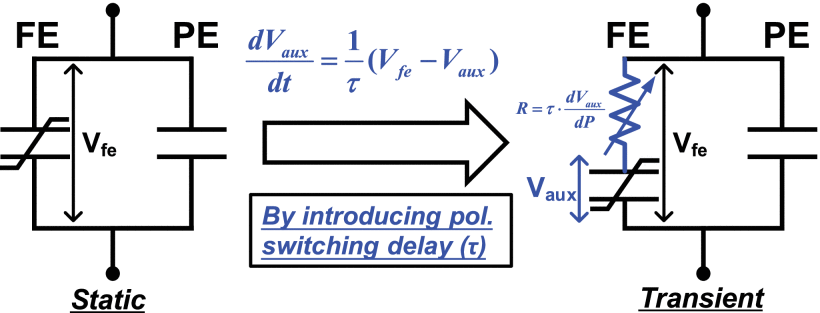C. Jin, T. Saraya, T. Hiramoto and M. Kobayashi,
in IEEE J-EDS, vol. 8, pp. 429-434, 2020
doi: 10.1109/JEDS.2020.2986345
Abstract - We have investigated transient IdVg and IdVd characteristics of ferroelectric field-effect
transistor (FeFET) by simulation with ferroelectric model considering polarization switching dynamics.
We show transient negative capacitance (TNC) with polarization reversal and depolarization effect can
result in sub-60mV/dec subthreshold swing (SS), reverse drain-induced barrier lowering (R-DIBL), and
negative differential resistance (NDR) without traversing the quasi-static negative capacitance (QSNC)
region of the S-shaped polarization-voltage (PV) predicted by single-domain Landau theory. Moreover,
the mechanisms of R-DIBL and NDR based on the TNC theory are discussed in detail. The results
demonstrated in this work can be a possible explanation for the mechanism of previously reported
negative capacitance field-effect transistor (NCFET) with sub-60mV/dec SS, R-DIBL, and NDR.
 |
| Equivalent circuits of a ferroelectric capacitor in both static and transient conditions. |

